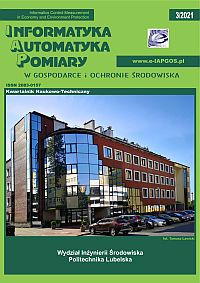Altonji J. G., Elder T. E., Taber C. R.: Selection on observed and unobserved variables: Assessing the effectiveness of catholic schools. Journal of Political Economy 113(1), 2005, 151–184 [http://doi.org/10.1086/426036].
DOI: https://doi.org/10.1086/426036
Barbieri M. M., Berger J. O.: Optimal predictive model selection. Ann. Statist. 32(3), 2004, 870–897 [http://doi.org/10.1214/009053604000000238].
DOI: https://doi.org/10.1214/009053604000000238
Bargiela A., Pedrycz W.: Human-centric information processing through granular modelling. Springer Science & Business Media 182, 2009 [http://doi.org/10.1007/978-3-540-92916-1].
DOI: https://doi.org/10.1007/978-3-540-92916-1
Bargiela A., Pedrycz W.: Granular computing. In: Handbook on Computational Intelligence. World Scientific, 2016 [http://doi.org/10.1142/9789814675017_0002].
DOI: https://doi.org/10.1142/9789814675017_0002
Bursac Z., Gauss, C. H., Williams D. K., Hosmer D. W.: Purposeful selection of variables in logistic regression. Source Code for Biology and Medicine 3(1), 2008, 17 [http://doi.org/10.1186/1751-0473-3-17].
DOI: https://doi.org/10.1186/1751-0473-3-17
Gauch H.: Model selection and validation for yield trials with interaction. Biometrics 44(3), 1988, 705–715 [http://doi.org/10.2307/2531585].
DOI: https://doi.org/10.2307/2531585
Geisser S., Eddy W. F.: A predictive approach to model selection. Journal of the American Statistical Association 74(365), 1979, 153–160 [http://doi.org/10.1080/01621459.1979.10481632].
DOI: https://doi.org/10.1080/01621459.1979.10481632
Genuer R., Poggi J. M., Tuleau-Malot C.: Variable selection using random forests. Pattern Recognition Letters 31(14), 2010, 2225–2236 [http://doi.org/10.1016/j.patrec.2010.03.014].
DOI: https://doi.org/10.1016/j.patrec.2010.03.014
Johnson J. B., Omland K. S.: Model selection in ecology and evolution. Trends in Ecology & Evolution 19(2), 2004, 101–108 [http://doi.org/10.1016/j.tree.2003.10.013].
DOI: https://doi.org/10.1016/j.tree.2003.10.013
Kiersztyn A., Karczmarek P., Lopucki R., Pedrycz W., Al E., Kitowski I., Zbyryt A.: Data imputation in related time series using fuzzy set-based techniques. IEEE International Conference on Fuzzy Systems (FUZZ-IEEE), Glasgow 2020, 1–8.
DOI: https://doi.org/10.1109/FUZZ48607.2020.9177617
Kiersztyn A., Karczmarek P., Kiersztyn K., Pedrycz W.: Detection and Classification of Anomalies in Large Data Sets on the Basis of Information Granules. IEEE Transactions on Fuzzy Systems, 2021 [htp://doi.org/10.1109/TFUZZ.2021.3076265].
DOI: https://doi.org/10.1109/FUZZ45933.2021.9494466
Kiersztyn A., Karczmarek P., Kiersztyn K., Pedrycz W.: The Concept of Detecting and Classifying Anomalies in Large Data Sets on a Basis of Information Granules. IEEE International Conference on Fuzzy Systems (FUZZ-IEEE), 2020, 1–7.
DOI: https://doi.org/10.1109/TFUZZ.2021.3076265
Kiersztyn A., Karczmarek P., Kiersztyn K., Łopucki R., Grzegórski S., Pedrycz W.: The Concept of Granular Representation of the Information Potential of Variables. 2021 IEEE International Conference on Fuzzy Systems (FUZZ-IEEE), 2021, 1–6.
DOI: https://doi.org/10.1109/FUZZ45933.2021.9494582
Laud P.W., Ibrahim J.G.: Predictive model selection. Journal of the Royal Statistical Society: Series B (Methodological) 57(1), 1995, 247–262 [http://doi.org/10.1111/j.2517-6161.1995.tb02028].
DOI: https://doi.org/10.1111/j.2517-6161.1995.tb02028.x
Mac Nally R.: Regression and model-building in conservation biology, biogeography and ecology: the distinction between – and reconciliation of – "predictive" and "explanatory" models. Biodiversity & Conservation 9(5), 2000, 655–671 [http://doi.org/10.1023/A:1008985925162].
DOI: https://doi.org/10.1023/A:1008985925162
Olivera A. R., Roesler V., Iochpe C., Schmidt M. I., Vigo A., Barreto S. M., Duncan B. B.: Comparison of machine-learning algorithms to build a predictive model for detecting undiagnosed diabetes-elsa-brasil: Accuracy study. Sao Paulo Medical Journal 135(3), 2017, 234–246 [http://doi.org/10.1590/1516-3180.2016.0309010217].
DOI: https://doi.org/10.1590/1516-3180.2016.0309010217
Pearce-Higgins J. W., Green R. E.: Birds and climate change: Impacts and conservation responses. Cambridge University Press 2014.
DOI: https://doi.org/10.1017/CBO9781139047791
Pedrycz W.: Knowledge-based clustering: From data to information granules. John Wiley & Sons, 2005 [http://doi.org/10.5555/1044924].
DOI: https://doi.org/10.1002/0471708607
Piironen J., Vehtari A.: Projection predictive model selection for Gaussian processes. IEEE 26th International Workshop on Machine Learning for Signal Processing (MLSP), Salerno 2016, 1–6.
DOI: https://doi.org/10.1109/MLSP.2016.7738829
Piironen J., Vehtari A.: Comparison of Bayesian predictive methods for model selection. Statistics and Computing 27(3), 2017, 711–735. [http://doi.org/10.1007/s11222-016-9649-y].
DOI: https://doi.org/10.1007/s11222-016-9649-y
ptop.org.pl (2016), (available: 01.10.2020).
Schafer B. C., Wakabayashi K.: Machine learning predictive modelling high-level synthesis design space exploration. IET Computers & Digital Techniques 6(3), 2012, 153–159 [http://doi.org/10.1049/iet-cdt.2011.0115].
DOI: https://doi.org/10.1049/iet-cdt.2011.0115
Smith A., Naik P. A., Tsai C. L.: Markov-switching model selection using Kullback-Leibler divergence. Journal of Econometrics 134(2), 2006, 553–577 [http://doi.org/10.1016/j.jeconom.2005.07.005].
DOI: https://doi.org/10.1016/j.jeconom.2005.07.005
Stephens P. A., Mason L. R., Green R. E., Gregory R. D., Sauer J. R., Alison J., Aunins A., Brotons L., Butchart S. H., Campedelli T., et al.: Consistent response of bird populations to climate change on two continents. Science 352(6281), 2016, 84–87 [http://doi.org/10.1126/science.aac4858].
DOI: https://doi.org/10.1126/science.aac4858
Symonds M. R., Moussalli A.: A brief guide to model selection, multimodel inference and model averaging in behavioural ecology using Akaike's information criterion. Behavioral Ecology and Sociobiology 65(1), 2011, 13–21 [http://doi.org/10.1007/s00265-010-1037-6].
DOI: https://doi.org/10.1007/s00265-010-1037-6







